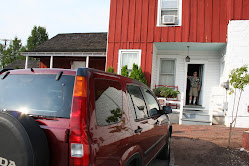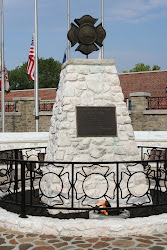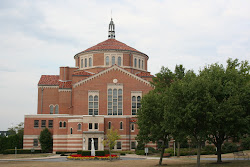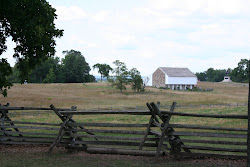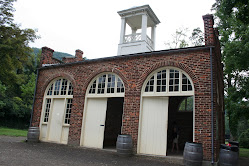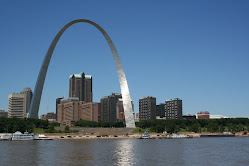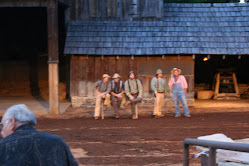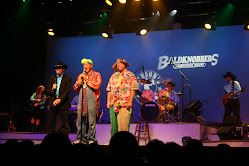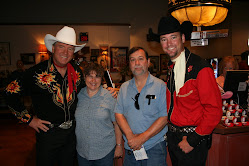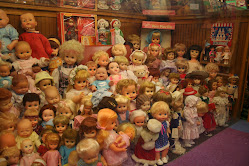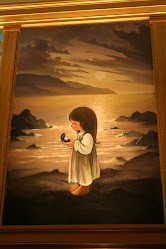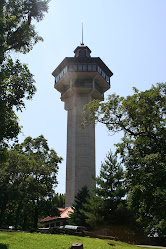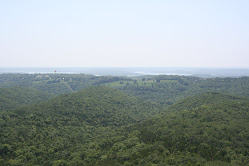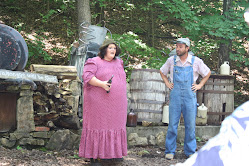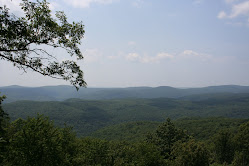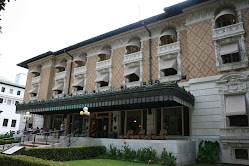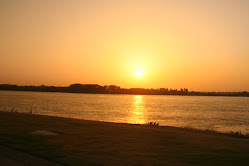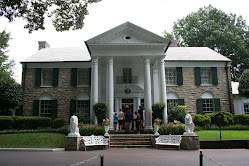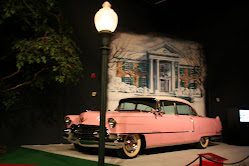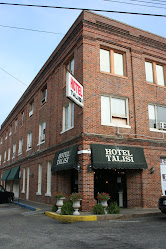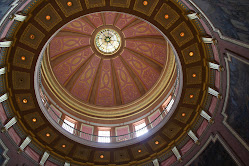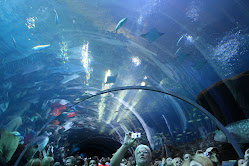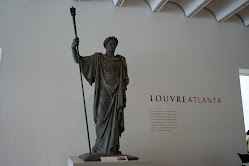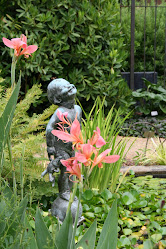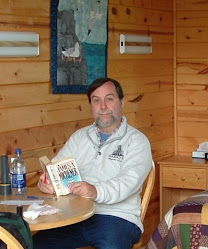After the Civil War, a vigilante group set themselves up to patrol the unruly wilderness in the Ozarks - the place that fueled the popular image of Hillbillies and the feuding MacCoys and Lil Abner. These guys adopted masks to conceal their identities from neighbors and called themselves "Bald Knobbers", after the nearly treeless hills or knobs that are in this area. Then, as so many law-enforcement groups do, they were corrupted by their power and became abusive criminals themselves. In the 1950s, as Branson was just catching on as an entertainment capital, a group of locals began to perform an outdoor drama version of the book, "Shepherd of the Hills", which apparantly was very popular in the early 20th century. It's a classic love story set against this lawless era - think "Oklahoma" with hills. Part of this performance included a barn dance backed up by blue grass musicians. A few years later, these musicians began performing in one of the newly opened theatres. Someone recognized them as the guys who played the baldknobbers in the play and they thought it sounded like a great name for the group. Today, almost 50 years later, they - the Mabe family and friends - are still playing, in their own theatre. They play mostly country-style music - no blue grass anymore - and have added a variety of hillbilly comics, with names like Willie Makeit, Hargus - the sad sack face, Droopy Drawers - think Tim Conway, and Stub, who can actually put his lip over his nose! Their humor is vaudevillean, usually based on the stupidity of either Hargus or Stub. ("If you had $13 in one pocket, and $12 in the other, what would you have?" "Somebody else's pants!") though it is occasionally topical: "You know there isn't really any oil shortage. We have oil, we just can't measure it." "Really, why is that?" "All the dipsticks are in Washington." (cymbal crash please)
But here's my favorite: A man goes to a revival meeting and says he's worried about his hearing. The minister placed his hands over the man's ears and prayed that he be healed. After a half an hour of prayer, the minister says "So how's you hearing?" The man says "I don't know. It doesn't come until Tueday at the court house!"
Other shows we enjoyed: The Showboat Branson Belle, a recreated sternwheeler, that features the classic foursome of two gals and two guys singing the hits of Broadway, as well as a ventriloquist who works with real dogs and even brings people up on stage, "throwing " his voice into theirs as he squeezes the back of their necks and they open their mouths. It was really fun, though we felt sorrier for the dogs than we did the people.
Roy Rogers, Jr. - the son of the Son of the Pioneer who does a decent job of telling his father's story and singing some of his songs. There is a museum attached that has Trigger (stuffed) and the old Lillybelle jeep from the TV show.
The Presleys: they were the other family that "started Branson". Outstanding musicians and vocalists, they tried their hand at comedy as well, often with the same jokes we'd heard earlier. But it was a good show.
The World's Largest Toy Museum with a million toys and artifacts of our youth. It could use a slightly better labeling system - there are a number of times when you say "what is that?" or "I wonder how old that is?" But I've never seen so many miniature cars, trucks, games, dolls etc. And then there's Titanic: the outside of which resembles half of the ship and the inside has a rebuilt "grand staircase" and state rooms - both first and third class, plus a room about the film, with behind the scenes video and costumes and props from the film version, and a lot of stories from survivors and early passengers who were lucky enough to have disembarked in Ireland.
All in all, lots of things to see and do. We even took an extra two hour side trip to go to Carthage, Mo, for the "Precious Moments" museum and chapel. Those little large-eyed figurines have done well. Sam Butcher, their creator, has built a chapel there with murals depicting, in figurine-like drawings, his slightly humorous view of heaven, the Beatitudes, and various tales from the Bible.
Still more proof that "no matter where you go..."


